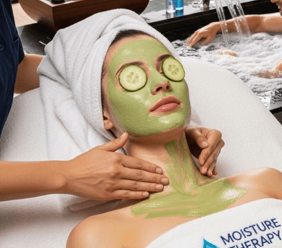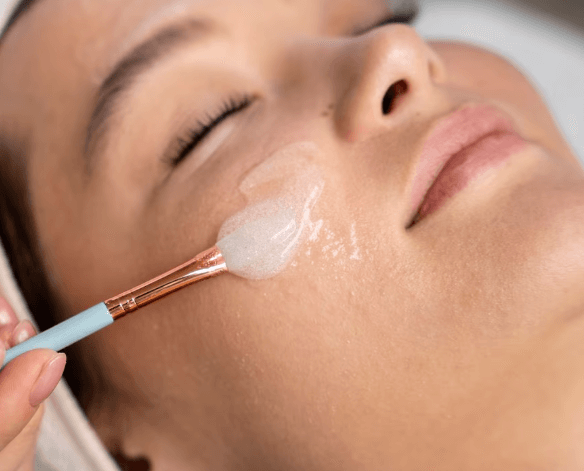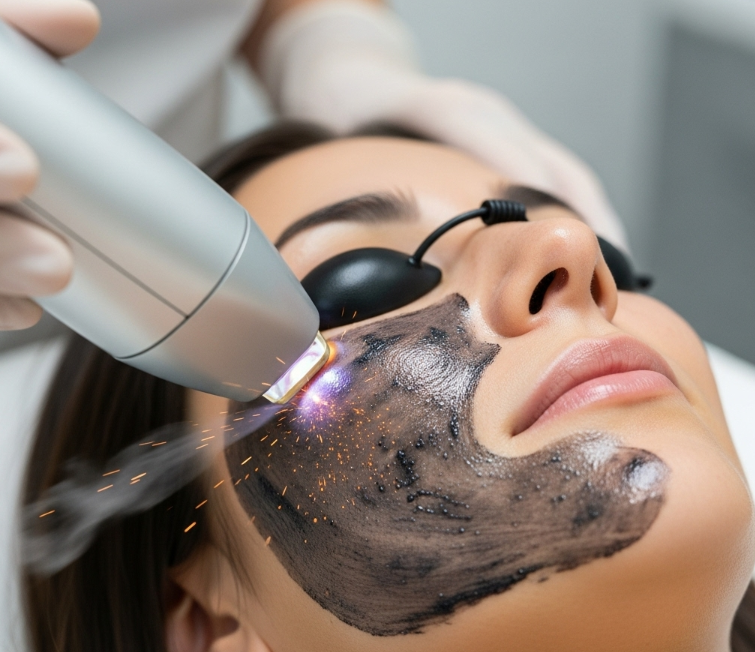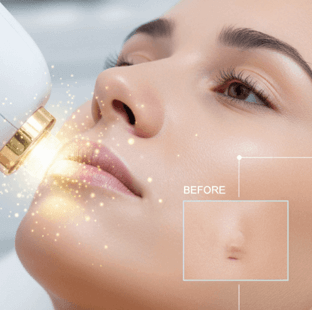Treatment Overview
Moisture Therapy is a central part of Korean dermatology programs for managing redness, flushing, and sensitive skin conditions such as rosacea, post-inflammatory erythema, and barrier-compromised skin. By deeply hydrating and repairing the skin barrier, moisture therapy reduces vascular reactivity, improves resilience, and minimizes the triggers that cause flushing.
In Korea, moisture therapy is delivered both in-clinic and at home. Clinics use hydration infusions, hyaluronic acid ampoules, sheet masks, and moisture-locking devices, while patients are guided to use medical-grade moisturizers and serums as part of their daily skincare. The goal is to create a balanced, hydrated environment that protects against inflammation and strengthens skin over time.
For redness and flushing, Moisture Therapy:
- Restores hydration balance and reduces tightness.
- Calms vascular reactivity by reinforcing the skin barrier.
- Provides soothing relief after lasers or peels.
- Improves skin resilience against environmental triggers.
Purpose & Benefits
- Barrier Repair: Replenishes ceramides, panthenol, and hyaluronic acid to strengthen skin.
- Redness Reduction: Hydrated skin reacts less to flushing triggers.
- Post-Procedure Recovery: Essential after lasers, peels, or exfoliation.
- Hydration Lock: Prevents transepidermal water loss that worsens sensitivity.
- Daily Maintenance: Forms the foundation of redness-control regimens.
Ideal Candidates
Moisture Therapy in Korea is recommended for:
- Patients with rosacea-prone or sensitive skin.
- Individuals with flushing triggered by dryness or barrier weakness.
- Adults recovering from laser, peel, or microneedling sessions.
- Patients with post-acne erythema and inflamed skin.
- Those seeking non-invasive maintenance care for redness and irritation.
Comparison with Other Treatments
- Moisture Therapy: Best for hydration, barrier repair, and supportive redness control.
- Anti-Redness Lasers (PDL, V-Beam, Nd:YAG): Target blood vessels directly; stronger vascular results.
- Antibiotics (Doxycycline, Minocycline): Internal anti-inflammatory, systemic effect.
- Beta-Blockers (Propranolol, Carvedilol): Reduce adrenaline-driven flushing; systemic role.
- Herbal Soothing Therapy: Plant-based anti-inflammatory support.
- Cooling Masks: Short-term calming; often combined with hydration therapy.
- Erythema-Reducing Creams: Daily topical redness control; may be layered over moisturizers.
Possible Risks & Complications
Moisture therapy is very safe, but potential issues include:
- Breakouts if heavy creams are used on oily skin.
- Allergic reactions to specific ingredients (fragrance, essential oils).
- Ineffectiveness if hydration is not layered properly with sunscreen.
Treatment Techniques Used
- In-Clinic Hydration Infusions: Hyaluronic acid, peptides, and antioxidants infused into the skin.
- Moisture-Locking Masks: Sheet or hydrogel masks applied post-laser or peel.
- Serum & Ampoule Therapy: Hyaluronic acid, panthenol, or ceramide-rich serums applied with LED or cryo-therapy.
- Daily Medical Moisturizers: Non-comedogenic, fragrance-free creams to restore hydration.
- Frequency: In-clinic 2–4 times monthly; at-home daily care twice daily.
Recovery & Aftercare
- Immediately: Skin feels soothed, redness reduced, and hydration restored.
- 1–2 Weeks: Barrier strengthened, less frequent flushing episodes.
- Maintenance: Daily moisturizer use plus monthly clinic sessions for best results.
Aftercare Tips:
- Use gentle, fragrance-free cleansers to avoid stripping moisture.
- Reapply moisturizer during the day if dryness worsens flushing.
- Pair with mineral sunscreen to protect against UV-triggered redness.
- Drink sufficient water and avoid alcohol-heavy products.
Results & Longevity
- Short-Term (Immediately–1 Day): Hydration surge, skin feels calmer.
- Medium-Term (2–4 Weeks): Redness episodes decrease, skin looks healthier.
- Long-Term: Stable vascular control and reduced sensitivity with ongoing moisture-focused care.
Treatment Process in Korea
- Consultation & Skin Assessment – Dermatologist evaluates skin hydration and redness triggers.
- Moisture Therapy Selection – Hydration infusion, mask, or serum chosen.
- Application – In-clinic therapy performed; home regimen prescribed.
- Clinic Add-Ons – Often combined with cooling therapy, LED calming, or herbal infusions.
- Follow-Up – Maintenance regimen adjusted every few months.
Why Korea is a Top Destination
- Korea leads in hydration-based skincare technologies (ampoules, hydrogel masks, hyaluronic acid infusions).
- Dermatologists integrate moisture therapy with vascular lasers and herbal care.
- Affordable compared to Western dermatology centers.
- Emphasis on multi-step routines that prioritize hydration and barrier repair.
- Korean skincare brands are globally recognized for moisture-first, sensitive-skin formulas.
Cost Range (Detailed Breakdown)
Pricing for Moisture Therapy in Korea for redness & flushing:
- Single In-Clinic Moisture Infusion Session: USD 80 – 150.
- Package of 3–5 Sessions: USD 300 – 700.
- Consultation Fee: USD 20 – 40.
- Clinic Add-Ons (Cooling mask, LED, herbal infusion): USD 50 – 120.
- Premium Redness Hydration Program (Moisture infusion + Lasers + Barrier therapy): USD 800 – 1,800.
Additional Costs in Korea:
- Medical-grade moisturizers (Ceramide, Panthenol, Hyaluronic acid): USD 30 – 80.
- Hydration serums/ampoules: USD 40 – 100.
- Sensitive-skin sunscreens: USD 20 – 50.
💡 Patients often call this the “hydration shield therapy”, since it protects the skin from flare-ups by restoring moisture balance and strengthening the barrier.
Popular Clinics in Seoul
- Oracle Dermatology – Moisture infusion + cooling masks for rosacea patients.
- Banobagi Dermatology – Multi-step hydration programs with barrier repair serums.
- Renewme Skin Clinic – Hyaluronic acid infusions + herbal tonics for redness-prone skin.
- View Plastic & Dermatology – Premium hydration + fractional laser packages.
- Chaum Anti-Aging Center – Luxury moisture therapy programs with regenerative infusions.




